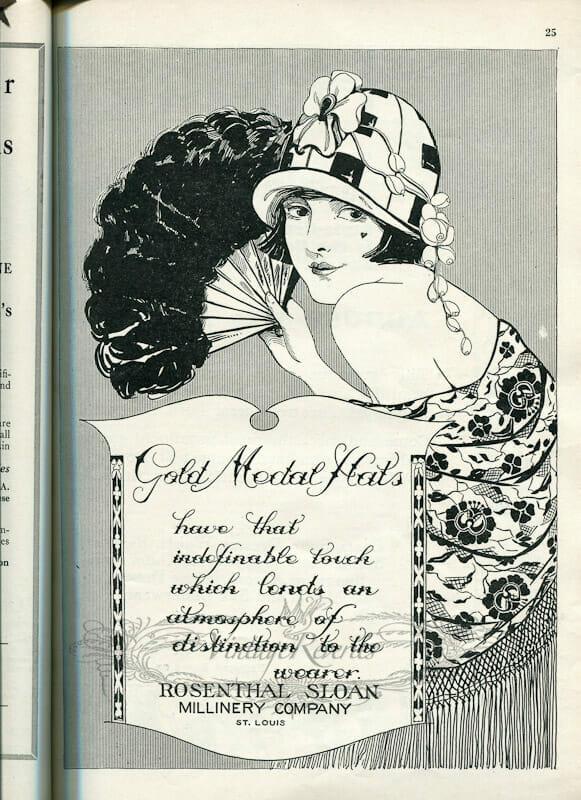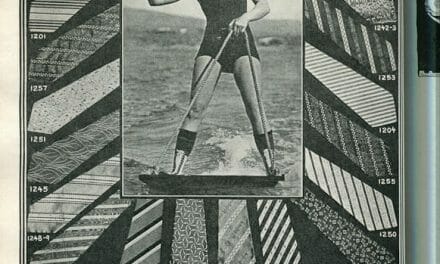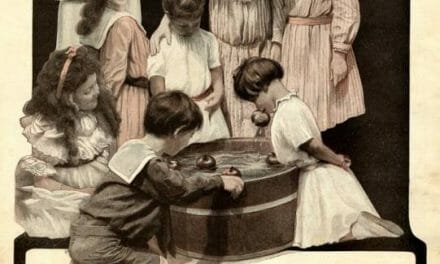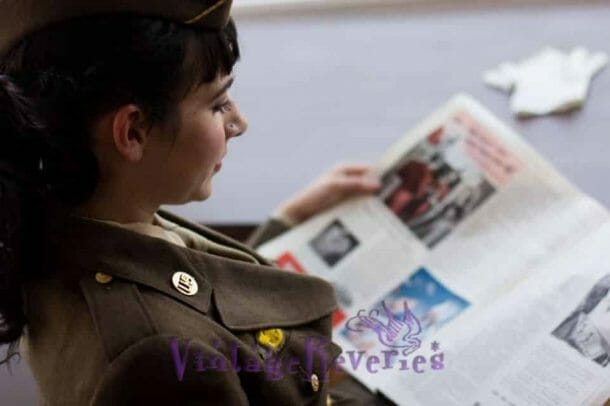
1920s Women’s Fashions Advertisements

The 1920s roared with changes in style, culture, and social norms, and one of the clearest reflections of this cultural shift came through fashion. Here’s a fascinating snippet: three pages from old St. Louis advertisements feature women’s dresses and hats from the August 1924 “Fashion Pageant.” These ads not only sell clothing but encapsulate the essence of the Jazz Age, blending art, practicality, and the spirit of an emerging modern woman.
Fashion of this era broke away from the constraints of the Victorian period and exuded a sense of freedom and liberation. The 1924 St. Louis Fashion Pageant was an opportunity for local retailers to showcase their latest collections, and these advertisements capture the visual elegance and appeal that defined the decade. Let’s take a closer look at some notable examples and their historical context:
- E.M. Thomas Company’s “Elizabeth Dresses”:
One full-page advertisement by this company highlights the work of Madame Thomas, promoting her celebrated fashion line. The featured illustration shows a woman gazing into a mirror, draped in a long waistless dress, styled with an elegant shawl and a jeweled hair comb securing her bobbed hair—a quintessential representation of late 1920s fashion. The drop-waist silhouette was a nod to the flapper style, designed to de-emphasize curves and celebrate new forms of femininity that embraced comfort without sacrificing elegance. Shafts of light in the illustration reflect the art deco movement, which heavily influenced the design aesthetic of the time. - Allois Schwartz’s Fall Line of Ready-to-Wear:
Another advertisement, by Allois Schwartz (located on Washington Avenue and 15th Street), captures the allure of emerging ready-to-wear collections. Prior to this decade, most clothing was custom-made, but the 1920s revolutionized this with the rise of mass-produced garments for an increasingly mobile and modern public. The illustrated advertisement features a poised model in a long, beaded drop-waist dress accented with a headband and feathered fan. Stacks of bracelets emphasize the indulgent accessorizing that epitomized the era, giving women the power to personalize classic staples with their own flair. - Gold Medal Hats:
Among these advertisements, one for Gold Medal Hats stands out for its artistry and striking aesthetic appeal. A chic woman dons a cloche hat, one of the era’s defining accessories. Draped in a shawl, she poses with a feathered fan, her bobbed hair accentuating the sharp lines of the hat’s design. The birthmark on her cheek is an exaggerated heart-shaped beauty mark—a playful, romantic touch that hearkens back to theatrical traditions yet feels totally at home in the free-spirited 1920s. Cloche hats were synonymous with modern style during this era, emphasizing streamlined silhouettes and short hairstyles popularized by the flapper movement.
The Historical Backdrop of 1920s Fashion
These advertisements, while focused on clothing, reflect deeper cultural dynamics of the period. The 1920s marked a seismic shift in the roles, freedoms, and lifestyles available to women. Following World War I, women began to shed their restrictive, corseted wardrobes in favor of looser garments that allowed for mobility and independence. The structured constraints of Edwardian and Victorian fashion had no place in the jazz halls or speakeasies of the decade.
Accessories, too, played a major role in women’s self-expression during this time. Cloche hats, shawls, feathered headbands, and beaded jewelry became staples not only for socialites and partygoers but also for everyday women inspired by Hollywood and the rapidly growing consumer culture.
St. Louis itself, an industrial hub in the Midwest, was an ideal breeding ground for showcasing these trends. Famous as a center for manufacturing and trade, the city was also home to a burgeoning fashion industry. Washington Avenue—the location of Allois Schwartz—was known as the “garment district” of the Midwest and housed numerous textile mills and clothing manufacturers. These businesses played a significant role in making fashion affordable and accessible to a larger audience.
Why These 1920s Ads Still Fascinate
Part of the charm of these 1924 advertisements lies in their artistry and narrative. They don’t simply market clothing—they tell a story of evolving roles and a society in transition. The figures in these illustrations don’t appear rigid or aloof like their Victorian predecessors but radiate confidence, modernity, and playfulness, which were characteristic of the Jazz Age woman.
Historical advertisements like these transport us to a time when fashion was less about practicality and more about creating an experience, statement, and identity. They also remind us of the transformative power fashion wielded in reflecting societal change—especially for women—during such a pivotal era.
While these vintage prints evoke nostalgia today, their legacy is more than aesthetic. They capture the aspirations of a generation redefining itself, challenging antiquated gender norms, and embracing the bold, liberating spirit of the 1920s. Whether you’re drawn to the glamorous simplicity of Madame Thomas’s designs or the audacious allure of flapper headbands, these advertisements remain a testament to the transformative power of fashion.



















You must be logged in to post a comment.